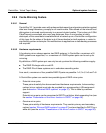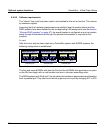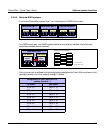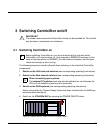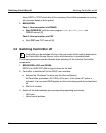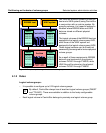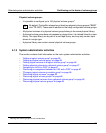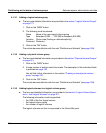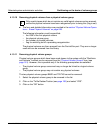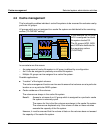
U41117-J-Z125-7-76 63
4 Selected system administrator activities
4.1 Partitioning on the basis of volume groups
4.1.1 General
By partitioning on the basis of volume groups, it is possible to combine certain logical
volumes to form a logical volume group (LVG) and certain physical volumes to form a
physical volume group (PVG).
Using rules which create associations between logical and physical volume groups, it is
possible to have CentricStor copy the logical volumes belonging to a particular LVG exclu-
sively onto the physical volumes of the assigned PVG.
Partitioning on the basis of volume groups offers the following advantages:
● It allows you to store the logical volumes of various host systems or applications on
different physical volumes.
● In the case of Dual Save
1
, it allows you to store copies of a logical volume on two
different physical volumes. This offers an extra degree of data security for situations
where a tape becomes unreadable, for example (see section “Dual Save” on page 71).
Normally CentricStor has four volume groups:
– the logical volume group “BASE”
– the physical volume group “BASE”
– the logical volume group “TR-LVG”
– the physical volume group “TR-PVG”
The TR-LVG and TR-PVG volume groups are used to transfer logical and physical volumes
(see the section “Transferring volumes” on page 562).
Each physical volume group has its own local free pool from which new volumes
can be taken as the need arises and to which freed volumes can be returned
(e.g. following reorganization).
1
This assumes that the Dual Save functionality has been released (see page 71).
i



